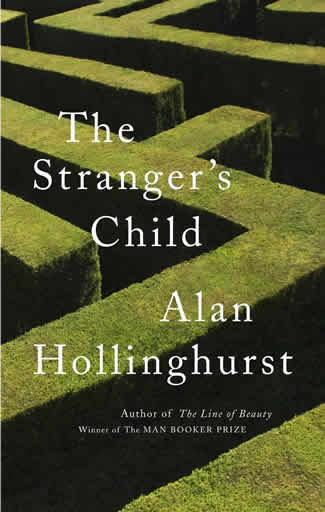 Reading the Longlist:
Reading the Longlist:
Unraveling a Mystique
The Stranger's Child
by Alan Hollinghurst
Review by Chelsea Bieker
As I neared the end of Alan Hollinghurst’s dense sophomore novel, The Stranger’s Child (Knopf 2011), it struck me as interesting, if not spectacular in some quiet way, that a five-part saga spanning an entire century could run nearly exclusively on the fuel of a character who is pronounced dead after the first hundred or so pages. The man at the center of Hollinghurst’s delicately crafted, privileged English world is Cecil Valance, a gregarious and hyper-sexed young poet with a knack for creating a whirlwind of lust around men and women alike. Playful and mischievous, Cecil partakes in an electric affair with introverted, emotionally immature fellow Oxford student George Sawle, who comes alive in the glow of Cecil’s attention. When George invites Cecil for a visit to his family’s modest English dwelling, ‘Two Acres’, he is both nervous and exhilarated to present Cecil as his friend. With lush and careful description, Hollinghurst writes of secret moments from George’s point of view depicting his infatuation with Cecil:
“He loved the beautiful rightness of his bearing, that everyone saw, and he loved all the things that fell short of beauty, or redefined it, things generally hidden, the freckled shoulders swollen with muscle, knees knotty with sinew, black body-hair streaked flat, dark blemishes of the summer’s mosquito-bites fading on his arms and neck…This was the man who had entered it, unaware of its secrets: he had quickly surveyed it and possessed it; now here he was, stretched out full length in front of it.”
Cecil also mesmerizes George’s young sister, Daphne Sawle, from whose perspective much of the novel is told. After Cecil dies heroically in World War I, he garners a rush of posthumous fame and notoriety that establishes him as an important poet and voice of his generation. Knowing nothing of Cecil’s affair with her brother, Daphne takes credit for the inspiration behind “Two Acres,” Cecil’s most famous poem, named after the home. We follow Daphe from age sixteen through a century of marriages, affairs, and intimate observation. She reappears along with other characters to create a full timeline of events, each secret and surprising connection unraveling Cecil’s mystique.
Told with exact precision and arresting imagery, this is a serious and at times trying book. Hollinghurst demands an agreement of patience and acceptance from the reader: in each of the five sections, we enter a new and unknown year in the presence of a new and unknown character, points of orientation often deeply buried in heavy description. Just when I had become fully acquainted with one place and time and people, Hollinghurst moved on, further exploring the effects and frailties of memory and time, and the many variances they can embody based on perception, perspective, or occasionally fierce pride.
Writers flock to the legend of the great Cecil Valance, and a handful take their turn at documenting his life through various publications. It is never felt, however, that any one of them truly succeeds. In many ways, Cecil floats above it all, entirely uncontainable, perhaps even by Hollinghurst himself. The Stranger’s Child ends in a hushed way, not offering the reader any particularly explosive ending, but rather the satisfaction of observing a man whose legend is so powerful it radiates off the other characters and the pages themselves, a scandalous and delectable treat. Ω
Chelsea Bieker is a fiction writer currently at work on a collection of short stories.


